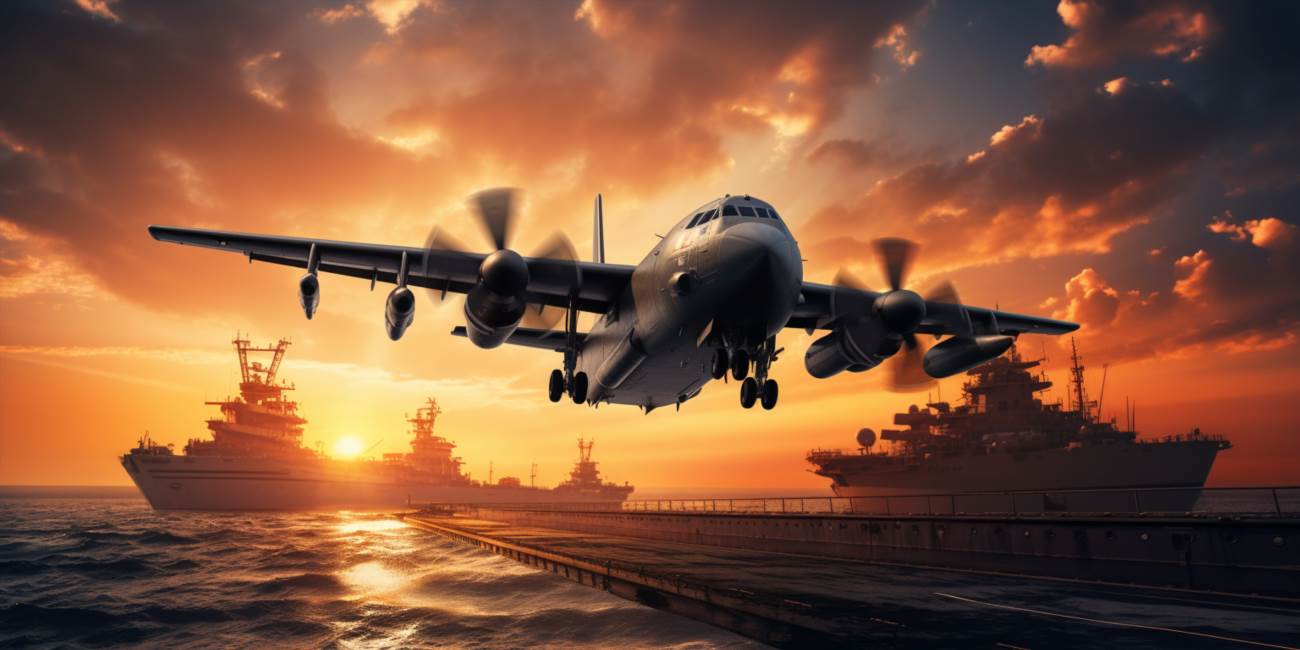One of the key aircraft in the Navy’s inventory is the F/A-18 Super Hornet, a formidable multi-role fighter. Renowned for its agility and firepower, the Super Hornet is a linchpin in air-to-air combat and ground-attack missions. Its ability to operate from aircraft carriers enhances its strategic value.
In the realm of electronic warfare, the Navy relies on the EA-18G Growler. This electronic attack aircraft is equipped with advanced jamming systems, disrupting enemy communication and radar systems. It acts as a force multiplier, allowing the Navy to control the electromagnetic spectrum.
For maritime patrol and reconnaissance, the Navy employs the P-8 Poseidon. This long-range anti-submarine warfare aircraft excels in monitoring and detecting surface and subsurface threats. Its sophisticated sensors and communication systems make it a cornerstone in maritime surveillance.
Amphibious warfare is supported by the V-22 Osprey, a unique tiltrotor aircraft capable of taking off and landing vertically. Serving as a versatile transport aircraft, the Osprey facilitates rapid deployment of troops and equipment, enhancing the Navy’s expeditionary capabilities.
Unmanned aerial vehicles (UAVs) have become integral to naval operations, with the MQ-4C Triton leading the way in maritime surveillance. This high-altitude, long-endurance UAV extends the Navy’s reach, providing persistent surveillance and reconnaissance capabilities over vast oceanic expanses.
Furthermore, the E-2 Hawkeye serves as the Navy’s airborne early warning and control aircraft. Operating from aircraft carriers, it provides crucial over-the-horizon radar coverage, extending the Navy’s awareness and response capabilities.
These aircraft, each with its specialized capabilities, collectively contribute to the Navy’s ability to project power, secure maritime interests, and maintain a vigilant presence across the world’s oceans.
Navy fighter jets, with their sleek design and powerful engines, dominate the skies with a perfect blend of grace and power. These aerial marvels are not just machines; they are a symbol of precision, speed, and technological prowess.
When these fighter jets take to the skies, they do so with a sense of purpose and determination. Armed with state-of-the-art weaponry and cutting-edge avionics, these aircraft are at the forefront of modern aerial warfare. The pilots who maneuver these jets are not mere aviators; they are the guardians of the skies, ensuring the safety and security of nations.
The grace with which Navy fighter jets navigate the vast expanse of the sky is nothing short of a ballet. The aerodynamic finesse of these machines allows them to execute breathtaking maneuvers, leaving spectators in awe. Whether it’s a high-speed pass, a tight turn, or a vertical climb, these jets perform with an unmatched poise that reflects years of engineering excellence.
However, it’s not just about aesthetics; it’s about the power packed within their frames. The roaring engines, capable of thrusting the aircraft at incredible speeds, demonstrate the raw force that these jets possess. The ability to accelerate, decelerate, and change altitude in the blink of an eye is a testament to the unrivaled power these machines wield.
Equipped with advanced radar systems and electronic warfare capabilities, Navy fighter jets are force multipliers in any conflict scenario. They are not only defenders of the airspace but also serve as strategic assets capable of projecting power across vast distances. The versatility of these aircraft allows them to engage both airborne and ground targets with precision and efficiency.
As these jets soar through the sky, they are not alone. They often operate in formation, showcasing the coordinated effort and teamwork that goes into safeguarding national interests. The synchronization of multiple aircraft in a patrol is a sight to behold, a manifestation of the seamless integration of man and machine.

Navy transport planes play a pivotal role in the global movement of troops and cargo, ensuring a seamless flow of personnel and resources across diverse terrains. These mighty aerial workhorses, equipped with state-of-the-art technology, form the backbone of logistics operations, executing strategic maneuvers with precision.
Designed to conquer the skies, these planes boast impressive capabilities that extend beyond conventional aircraft. Their versatility allows them to adapt to various mission requirements, from rapid troop deployment to the efficient delivery of essential cargo supplies. In the vast theater of military operations, where agility is paramount, these transport planes stand as reliable guardians of mobility.
One of the defining features of these planes is their capacity to carry substantial cargo loads. With cavernous interiors designed to accommodate military vehicles, equipment, and supplies, they serve as airborne lifelines, bridging geographical gaps and ensuring that logistics chains remain unbroken. The ability to swiftly transport large volumes of cargo proves instrumental in sustaining military operations across the globe.
When it comes to troop deployment, transport planes become the airborne chariots of military forces. Capable of swiftly ferrying troops to distant locations, they enhance strategic flexibility and responsiveness. Whether executing rapid deployments in crisis situations or supporting long-term missions, these planes facilitate the movement of troops with speed and efficiency.
In the intricate dance of military logistics, the role of transport planes transcends mere conveyance. They become orchestrators of synchronized movements, ensuring that cargo and troops arrive precisely when and where they are needed. This meticulous coordination is the bedrock of successful military endeavors, underlining the significance of these aerial marvels in the broader strategic landscape.
As we delve into the world of military transport planes, it’s essential to appreciate their dual role as enablers of both logistics and tactical mobility. These aerial giants, soaring through the skies with purpose, embody the military’s commitment to swift and efficient transport of cargo and troops, a testament to the intricate dance of strategy and execution.
Amidst the vast expanse of the open sea, helicopters become the silent guardians, embarking on rescue missions day and night. These airborne heroes navigate the skies with unparalleled precision, their rotors slicing through the air as a beacon of hope in times of distress.
The essence of a rescue mission lies in the seamless coordination of a skilled crew, their unwavering dedication to the cause evident in every maneuver. The relentless pursuit to save lives propels them forward into the heart of the storm, where the need is greatest.
Picture this: a helicopter hovering over tumultuous waves, its searchlight piercing through the darkness, searching for any sign of life. The crew, a harmonious blend of expertise and bravery, stands ready for any unforeseen challenges that may arise during the rescue mission.
It’s a symphony of technology and human spirit, as the helicopter descends to execute a flawless water rescue. The precision with which the crew operates is awe-inspiring, a testament to their rigorous training and unwavering commitment to the art of saving lives.
Whether it’s a stranded vessel caught in a tempest or a lone survivor clinging to hope amidst the vastness of the ocean, these helicopters and their dedicated crews are the embodiment of courage. Each rescue mission is a narrative of selflessness, a tale written in the indomitable spirit of those who risk their own safety to save others.
As the night sky envelops the scene, the helicopter and its crew press on, their mission a beacon of humanity against the backdrop of nature’s challenges. In this relentless pursuit of rescue, every moment counts, every decision made by the crew a step closer to ensuring that hope is never lost at sea.
Thus, the saga continues, with helicopters crisscrossing the vast expanse, their rotor blades singing the hymn of hope. The rescue missions persist, driven by the noble cause of answering the call for help and ensuring that no soul is left adrift, lost to the relentless embrace of the open ocean.






